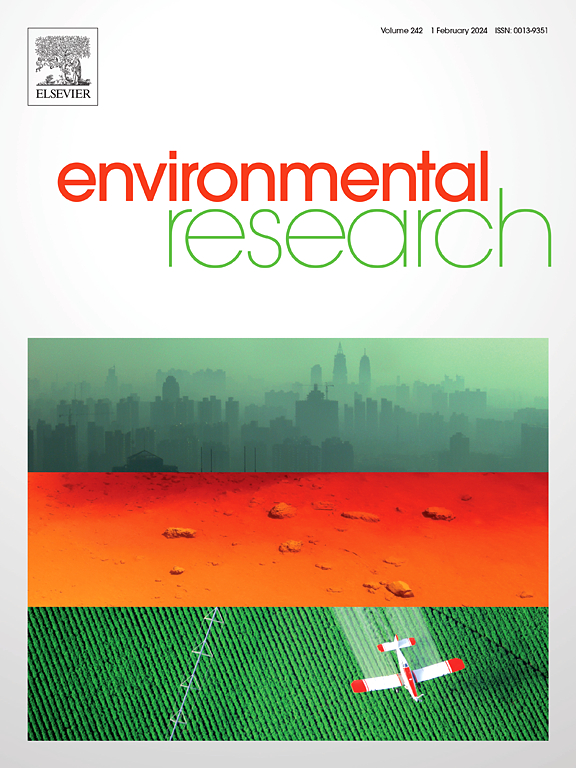火山环境对Setaria viridis根瘤土壤微生物关键类群和生态系统多功能性的影响
IF 7.7
2区 环境科学与生态学
Q1 ENVIRONMENTAL SCIENCES
引用次数: 0
摘要
基石类群在生态系统多功能性中具有重要意义,因为某些物种具有重要功能,如循环利用土壤养分、促进植物生长、影响生物地球化学过程以及维护人类健康。然而,火山根瘤土壤中的微生物群落与生态系统多功能性之间的关系仍是一个空白。因此,在本研究中,我们采用 Illumina MiSeq 高通量测序技术分析了火山岩根瘤土壤中的微生物群落组成。与非火山地区相比,火山土壤具有更高的真菌α多样性,而细菌的绝对丰度(16S 基因拷贝数)在两个演替区之间存在显著差异(P < 0.0001)。网络分析进一步表明,非火山地区的微生物多样性超过了火山地区。与非火山地区相比,火山真菌网络具有更多的节点和边,更加复杂(节点:425 对 770;边:21844 对 74532),并且富含更多的根圈生长促进菌。回归分析和相关网络显示,与细菌相比,真菌群落与生态系统多功能性的关系更为密切。这项研究为研究火山植物根圈微生物关键类群奠定了基础,并为了解植物根圈土壤生态系统的多方面功能提供了宝贵的见解。本文章由计算机程序翻译,如有差异,请以英文原文为准。

Effects of volcanic environment on Setaria viridis rhizospheric soil microbial keystone taxa and ecosystem multifunctionality
Keystone taxa are significant within ecosystem multifunctionality, as certain species fulfil essential functions such as recycling soil nutrients, promoting plant growth, influencing biogeochemical processes, and contributing to human health maintenance. However, there are still gaps regarding the relationship between microbial communities in volcanic rhizospheric soil and ecosystem multifunctionality. As a result, in this research, we employed Illumina MiSeq high-throughput sequencing to analyse the microbial community composition of rhizospheric soil from volcanic S. viridis. Compared with non-volcanic areas, volcanic soils have higher fungal alpha diversity and the absolute abundance of bacteria (16S gene copies) showed significant variation between the two successions (P < 0.0001). The network analysis further demonstrated that the microbial diversity in non-volcanic regions surpassed that of the volcanic area. The volcanic fungi network has more nodes and edges, is more complex than non-volcanic areas (Nodes: 425 vs. 770; Edges: 21844 vs. 74532), and more rhizosphere growth-promoting bacteria are enriched. Regression analysis and correlation networks showed that fungal communities were more closely associated with ecosystem multifunctionality than bacteria. This study lays the groundwork for examining the microbial keystone taxa in the rhizosphere of volcanic plants and offers valuable insights into the multifaceted functions of plant rhizospheric soil ecosystems.
求助全文
通过发布文献求助,成功后即可免费获取论文全文。
去求助
来源期刊

Environmental Research
环境科学-公共卫生、环境卫生与职业卫生
CiteScore
12.60
自引率
8.40%
发文量
2480
审稿时长
4.7 months
期刊介绍:
The Environmental Research journal presents a broad range of interdisciplinary research, focused on addressing worldwide environmental concerns and featuring innovative findings. Our publication strives to explore relevant anthropogenic issues across various environmental sectors, showcasing practical applications in real-life settings.
 求助内容:
求助内容: 应助结果提醒方式:
应助结果提醒方式:


